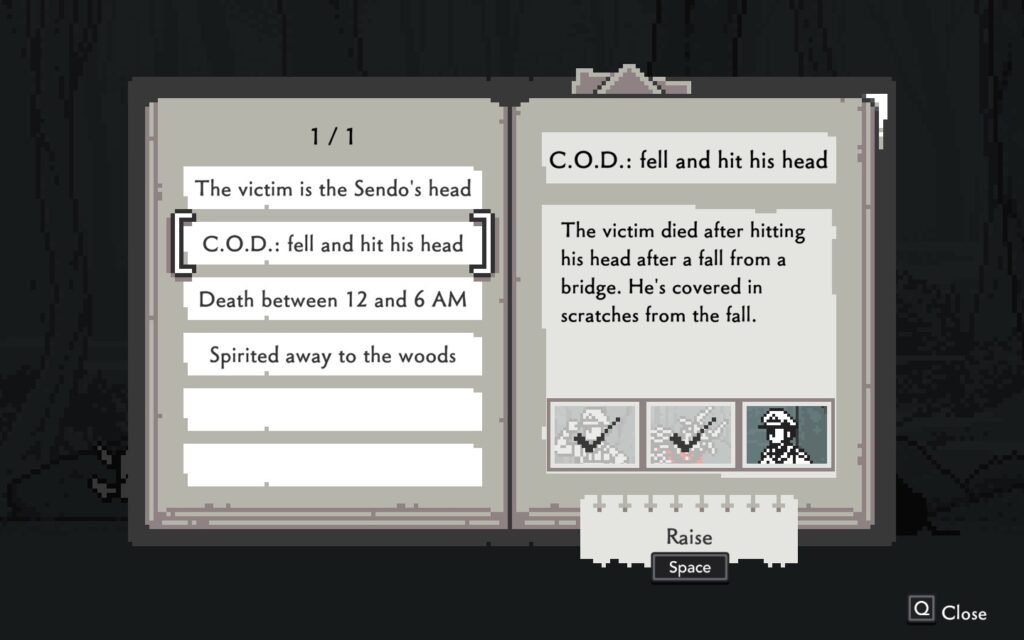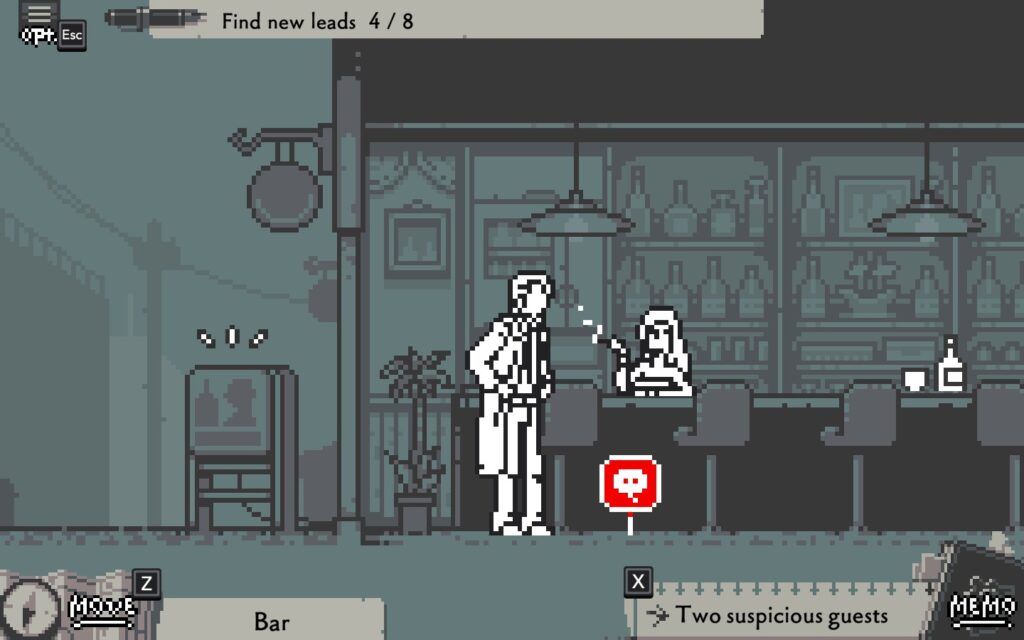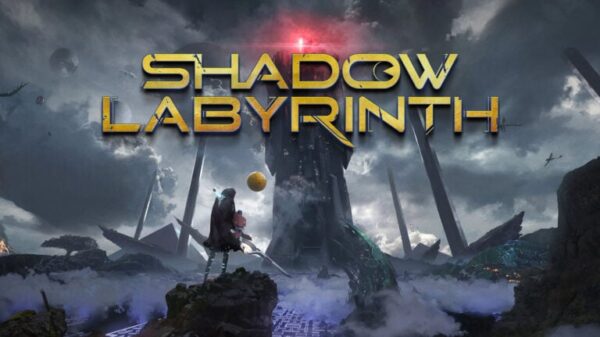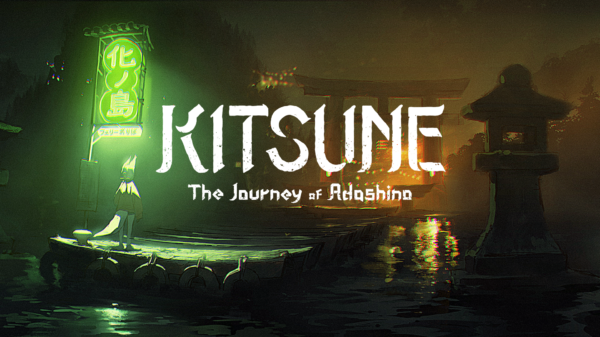Makoto Wakaido’s Case Files Trilogy Deluxe presents four bite-sized pixel art mysteries to solve with simple detective mechanics and a steady progression in quality.
Makoto Wakaido’s Case Files Trilogy Deluxe
Developer: Hakababunko
Price: $13
Platforms: PC (reviewed), Switch
MonsterVine was provided with a PC code for review.
Makoto Wakaido’s Case Files Trilogy Deluxe is a collection of four short detective games starring Detective Makoto Wakaido. The first three were originally released for mobile devices in Japan as standalone games, and the fourth was added when the trilogy was bundled together for this collection. All four are available from the start, but although they’re largely standalone stories, I feel it works best to play them in order.
With pixel art graphics and characters presented in black and white, it has a simple visual style that mostly works in its favor. Although there was one time when I didn’t realize part of the screen showed the inside of a room due to the flat background, the majority of the game makes good use of its design – a red splash of blood, for example, stands out in stark contrast against the white character sprites.

Gameplay is equally simple. Areas are accessed via a small map of locations and presented in a side-scrolling format, where you can interact with other characters and marked investigation spots. Once you do so, a short list of choices will appear so you can ask questions or inspect the environment. Relevant information is added to your notebook as clues, and the game keeps track of how many clues are left in the current chapter. Any recorded clue can also be “raised” to add it to the list of choices when questioning characters or investigating key spots. For example, if you learn about a witness, you might set that clue to ask other characters about them or search a database for their name. Your notebook helpfully lets you know if a clue can be used in the current area.
Unfortunately, this system is set up in a tedious fashion. Only one clue can be raised at a time, and you can’t open your notebook while in conversation. This means if you have multiple clues to ask a specific character about, you’ll need to open your notebook, set the first clue, close your notebook, talk to the character, choose the new option to see their dialogue, back out of the dialogue tree, open your notebook again, set the second clue, etc. Being able to change active clues without leaving the dialogue tree is a small change that would have gone a long way to avoiding tedium.

Once you’ve gathered all of the current chapter’s clues, you enter the deduction phase, where you answer a sequence of questions about the case using the clues you have. It can be very specific about the answer it wants – if the question asks which character was seen fleeing the crime scene, for example, it might require you to answer with a clue specifically about them fleeing the crime scene instead of one that just gives the character’s name – but for the most part, this is a simple system that summarizes the chapter’s findings in a clear way.
The first case I found to be rather bland until the very end when it culminated in a twist that turned the mystery on its head. The second case was significantly more in-depth, with much more back-and-forth required during the investigation and a more complicated mystery. The third returned to a fairly linear progression but made up for it with the most interesting story of the lot. While the first two cases never quite got me invested in the outcome, largely because the quick progression leaves little time to get to know the characters, the third had me hooked from the start. Finally, the fourth case seemed like the culmination of the series, with an interesting story and an entire manor to search for clues, which made it feel the most like a traditional adventure game.

None of the cases in Makoto Wakaido’s Case Files Trilogy Deluxe are especially long, each lasting a little over an hour. They aren’t very difficult, either, and if you do get stuck, there’s a hint option that will tell you what to do next. But although their gameplay and presentation might be simple, their ambition isn’t. Every case ends with a twist, and the first three in particular use their twists to recontextualize the entire case and its storytelling. Some of these twists work better than others, particularly since they aren’t something you discover yourself while playing, but they always left me thinking. Overall, these ambitious ploys in the storytelling elevated the mysteries to a level beyond what they appeared to be on the surface and made it a memorable experience.
 The Final Word
The Final Word
Although the twists in Makoto Wakaido’s Case Files Trilogy Deluxe don’t always hit home and the clue system is unnecessarily tedious, the cases get better and better as you progress. By the time the credits rolled on the final entry, I found myself thinking that I’d like to see a new Makoto Wakaido game someday to see where they can go from here.
– MonsterVine Rating: 4 out of 5 – Good








































































































